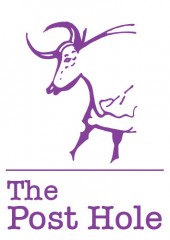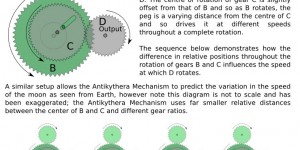Professor Ingold, University of Aberdeen, gave a lecture with the above title to a collection of students and staff at the University of York on the 14th January 2009, summarising the second of three chapters of his book which is soon to be published - The Four As: Anthropology, Archaeology, Art and Architecture. The main focus of the lecture was to question the dominance of Aristotle's hylomorphic theory in relation to late and post-medieval architecture. Hylomorphism in relation to architecture is a common theory held by many art and architectural historians, which emphasises the division of "design" from "material". In such a way the design of a structure is held up to be the perfect, unerring ideal with the material realisation of such a design being purely a crystallisation of the design components. This emphasises the role of the architect, as purported by the Italian architect Leon Battista Alberti in his De Re Aedificatoria. At the same time this theory downplays the role of the highly skilled craftsmen, in particular the master masons. This theory underlies a dominant assumption: that a building had a finished state, as dictated by the architect's design. It is this assumption that Professor Ingold challenges; presenting a building as a process rather than an object; a process which continues from the initial conception phase throughout its existence via construction and occupation.
Professor Ingold's lecture highlighted the need for the role of the architect in comparison to master masons and craftsmen to be carefully considered and the common hylomorphic assumptions questioned. However, his own challenge to these assumptions was highly theoretical and would have gained more credibility and support if specific sites were used to support his arguments. A highly literary focus ran throughout his presentation, with more time spent on the historical definitions of the word 'architect' than on examples where alternative approaches to late and post-medieval architecture were carried out. The main case study highlighted was David Turnbull's work at Chartres Cathedral, which compares the building of Chartres Cathedral with the workings of a research laboratory; small, autonomous units working independently, while communicating with each other.
Overall, this lecture was highly interesting and challenged buildings archaeologists and architectural historians to reassess some of their key assumptions. Introducing ideas, but not truly examining how these have been used to approach historical buildings, allowed for a greater introduction to the world of the architects and craftsmen of this period. A more detailed look at his work is soon to be published, and this will hopefully take the challenge to hylomorphic theories further and more practically. As an introduction to the assumptions many of us make when looking at historical buildings this lecture was highly successful, hopefully inspiring some to question these assumptions and the merits and downsides of different approaches towards the role of design in late and post-medieval buildings.## Tim Ingold - Selected Bibliography
- Ingold, T. (Forthcoming) The Four As: Anthropology, Archaeology, Art and Architecture
- Ingold, T. (2007) 'Materials against materiality', Archaeological Dialogues, 14(1) 1-16
- Ingold, T. (2007) 'Writing texts, reading materials: a response to my critics', Archaeological Dialogues, 14(1) 31-38
- Ingold, T. (2001) 'Beyond art and technology: the anthropology of skill' in Schiffer, M. B. (ed) Anthropological perspectives on technology 17-31. Albuquerque: University of New Mexico Press
- Ingold, T. (2000) The perception of the environment: essays on livelihood, dwelling and skill. London: Routledge.
- Ingold, T. (1995) 'Building, dwelling, living: how animals and people make themselves at home in the world'in Strathern, M. (ed.) Shifting Contexts 57-80. London: Routledge
- Ingold, T. (1995) 'Work, time and industry', Time and Society 4(1) 5-28
- Ingold, T. (1993) 'The temporality of the landscape', World Archaeology 25 152-174
Further Reading
- Turnull, D (2000) Masons, Tricksters and Cartographers: Comparative Studies in the Sociology of Scientific and Indigenous Knowledge. London: Routledge. — Especially Chapter 2: "Talk, templates and tradition: How the masons built Chartres Cathedral without plans", Pp 53-88.
- Turnbull, D (1993) 'The Ad Hoc Collective Work of Building Gothic Cathedrals with Templates, String, and Geometry', Science, Technology & Human Values 18(3) 315-340
- Full bibliography and biography for Tim Ingold





